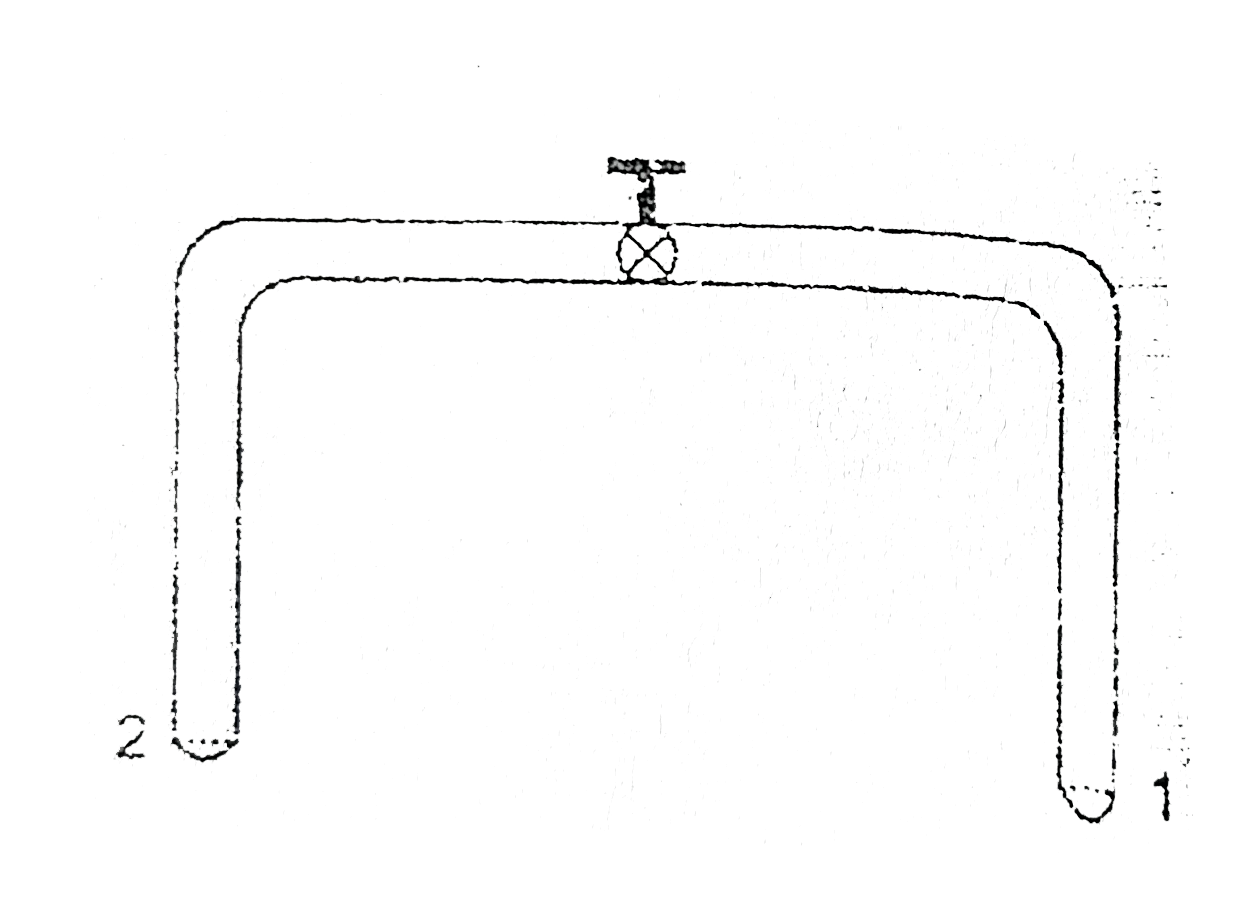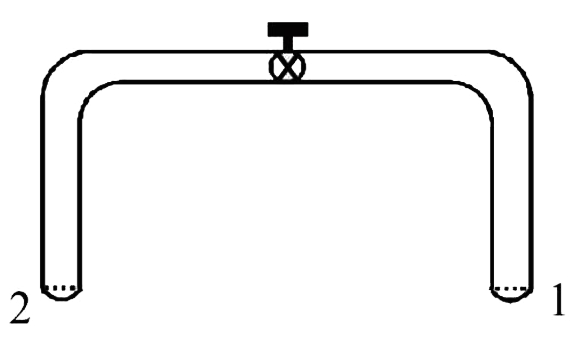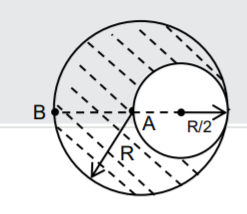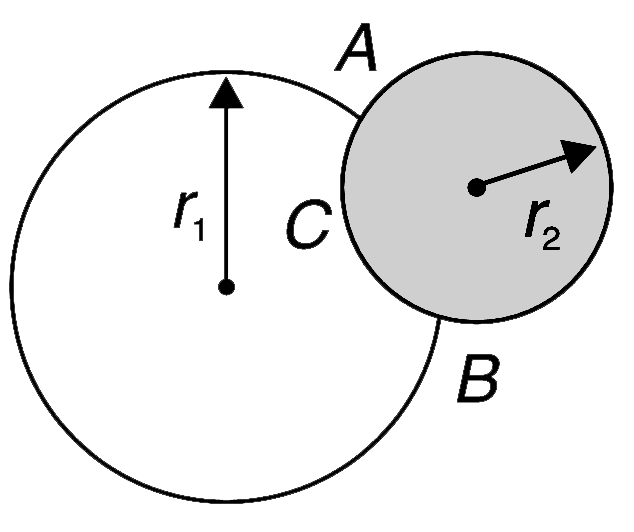A glass tube of uniform internal radius (r) has a valve separating the two identical ends. Initially, the valve is in a tightly closed position. End 1 has a hemispherical soap bubble of radius r. End 2 has sub-hemispherical soap bubble as shown in figure. Just after opening the valve.

Air from end 1 flows towards end 2 No change in the volume of the soap bubbles
Air from end 1 flows towards end 2. Vole of the soap bubble at end 1 decreases
No change occurs
Air from end 2 flows towards end 1 decreases the soap bubble at end 1 increases
The correct Answer is:B
End 1 has hemispherical soap bubble, hence its radius is r which is same as radius of tube. Pressure inside bubble 1 can be written as follows: P1=P0+4Tr...........(i)
Let radius of bubble at end 2 is R then pressure inside bubble 2 can be written as follows:
P2=P0=4T4......(ii)
Sincer <R, hence P1>P2, hence air from end 1 flows towards end 2 and volume of bubble 1 decreases.
Topper's Solved these Questions
- MECHANICAL PROPERTIES OF FLUIDSBook:MODERN PUBLICATIONChapter:MECHANICAL PROPERTIES OF FLUIDSExercise:Competition File (C. MCQ With More Than One Correct Answers)
Explore 12 Videos
- MECHANICAL PROPERTIES OF FLUIDSBook:MODERN PUBLICATIONChapter:MECHANICAL PROPERTIES OF FLUIDSExercise:Competition File (D. MCQ Based On A Given Passage/Comprehension)
Explore 16 Videos
- MECHANICAL PROPERTIES OF FLUIDSBook:MODERN PUBLICATIONChapter:MECHANICAL PROPERTIES OF FLUIDSExercise:Competition File (JEE (Main) & Other State Boards For Engineering Entrance)
Explore 23 Videos
- MATHEMATICAL TOOLSBook:MODERN PUBLICATIONChapter:MATHEMATICAL TOOLSExercise:PRACTICE PROBLEMS (10)
Explore 12 Videos
- MOTION IN A PLANE Book:MODERN PUBLICATIONChapter:MOTION IN A PLANE Exercise:Chapter Practice Test
Explore 15 Videos
Similar Questions
Knowledge Check
A glass tube of uniform internal radius(r) has a valve separating the two identical ends. Intially, the valve is in a tightly closed position. End 1 has a hemispherical soap bubble or radius r. End 2 has sub-hemispherical soap bubble as shown in figure. Just after opening the valve,
 A(a) air from end 1 flows towards end 2. No change in the volume of the soap bubblesB(b) air from end 1 flows towards end 2. Volume of the soap bubble at end 1 decreasesC(c) no changes occursD(d) air from end 2 flows towards end 1. volume of the soap bubble at end 1 increases
A(a) air from end 1 flows towards end 2. No change in the volume of the soap bubblesB(b) air from end 1 flows towards end 2. Volume of the soap bubble at end 1 decreasesC(c) no changes occursD(d) air from end 2 flows towards end 1. volume of the soap bubble at end 1 increasesTwo spherical soap bubbles of radii r1 and r2 in vacuume collapse under isothermal condition. The resulting bubble has radius R such that
AR=r1+r2BR=(r1+r2)12CR=√r21+r22DR=[(r2r2(r1+r2)]Two spherical soap bubbles of a radii 1 cm and 2 cm vacuum coalesce under isothermal conditions . The resultant bubble has a radius of
A2/√5 cmB√5 cmC√3 cmD√6 cm
Two soap bubbles of radius r1 and r2 combine. Find radius of curvature of the common surface separating them.

View SolutionAn isolated and charged spherical soap bubble has a radius 'r' and the pressure inside is atmospheric. If 'T' is the surface tension of soap solution, then charge on drop is:
View SolutionTwo unequal soap bubbles are formed one on each side of a tube closed in the middle by a tap. What happens when the tap is opened to put the two bubbles in communication?
View SolutionA soap bubble A of radius 0.03 m and another bubble B of radius 0.04 m are brought together, so that the combined bubble has a common interface of radius r, then the value of r is
View SolutionA solid sphere having radius R and uniform charge density ρ has a cavity of radius R2 as shown in figure.Find the value of ∣∣∣EAEB∣∣∣

View Solution


